sequences for scoliosis
there are six major areas of the body to focus on while doing the yoga poses for scoliosis. these areas are very important in creating proper alignment, decreasing pain. and minimizing further curvature of the spine.
1. feet and legs. When standing and walking, it is very important to place equal weight on both feet and to be aware of any imbalances. Strengthening the legs creates a solid foundation from which the spine can stretch and become freer, and it enables the legs, rather than the spine, to carry the weight of the body.
2. Spine. Since this is where the scoliosis is located, it is important to focus on lengthening the spine, which tends to reduce the S curve.
3. Psoas (Major and Minor). These two muscles (a pair on each side of the body) are the principal flexors of the thigh. They arise from the iliacus muscle and along the vertebral column and join to insert on the lesser trochanter of the femur. Together with the iliacus, they form a structural and functional unit called the iliopsoas. Besides flexing the thigh, the iliopsoas is an important postural muscle. During sit ting it balances the torso; in standing it counteracts the tendency of the torso to fall behind the line of gravity, which passes just in back of the hip joints. Keeping this muscle well toned aligns the lower limbs with the torso and frees the spine.
4. Scapula. To prevent the upper back from rounding (a common problem in people with scoliosis) , it is important to drop the shoulder blades down from the ears and draw them in toward the front of the body. To facilitate this movement, we must develop increased flexibility of the muscles surrounding the shoulder blades.
5. Abdominal Muscles. To strengthen the abdominal muscles is very important with a scoliosis. If the abdominals are weak, then it causes the back muscles to overwork and therefore tighten. In extreme cases, it may cause lordosis or an extreme curve of the lower back particularly on the concave side of the lower back.
6. Breath. Awareness of the breath is perhaps the most important thing to focus on while doing the yoga poses. Usually very little air enters the lung on the concave side of the spine. Sending the breath into the collapsed rib cage on this side can actually stretch the intercostal muscles and create more lung capacity. This creates more openness and evenness on both sides of the chest, from the inside out.
Yoga Poses For Lengthening the Spine
Cat/Cow Pose. At the start of a practice period, loosening the spine with the breath is important to prevent injury, particularly at the apex of the scoliosis. Kneel with the hands below the shoulders and the knees below the hips. Inhaling, lift the head and tailbone, making the lower back concave. Exhale and tuck the tailbone, rounding the back and releasing the neck. Repeat at least 10 times.
Vajrasana (Child's Pose). After completing the exhalation in the Cat/Cow Pose, stretch the hands out in front. Inhale deeply into the back, particularly the concave side where the ribs are compressed. Exhale and move the buttocks back halfway toward the heels. Inhale, and stretch the arms and the pelvis away from each other, with the upper back following the arms and the lower back following the pelvis. Breathe into this position, feeling the intercostal muscles stretching between the ribs and the spine and back muscles lengthening. To help stretch the compressed ribs on the concave side, move the arms toward the convex side, keeping the arms shoulder-width apart. Notice how this movement makes the back more even. Mter breathing into this position for a minute, move the buttocks all the way back to the heels and relax the arms by your side. Relax the entire body.
Trikonasana (Triangle Pose). In Triangle Pose, the feet are separated while the torso stretches to the side. Because of the scoliosis, your emphasis should be different when you stretch to each side. When stretching toward the side of the concavity, emphasize lengthening the spine to open up the compressed ribs on the underside of the body and decrease the protrusion of the ribs on the opposite side. When stretching to the convex side, emphasize twisting to create more evenness on the sides of the back.
Virabhadrasana I (Warrior Pose). This pose strengthens and stretches the legs, psoas, and back muscles. For students with scoliosis, this pose is best practiced with the support of a doorjamb or pillar, to keep the torso upright and balanced. Bring the back groin to the edge of the door jamb with the front heel about two feet ahead and the front leg hugging the side of the wall. Place the back toes about two feet behind the left hip. Square the two hips so they are parallel to each other and point the tailbone to the floor, lengthening the sacrum.
Inhale and bring the arms overhead parallel to the shoulders, palms facing toward each other, and lift from the upper back, lengthening the ribs and spine out of the pelvis. Exhale and bend the right leg, creating a right angle, with the thigh parallel to the floor and the shinbone perpendicular to the floor. The right knee should be directly over the right heel, with the left leg fully extended and the left heel descending to the floor. Keep lifting the spine and at the same time press into the floor with the back leg. If you have difficulty bringing the back heel to the floor, place a sandbag under the heel for balance. Pressing it back and down to the floor helps to penetrate the deep psoas muscle.
Salabhasana (Locust Pose). This backbend is very important for scoliosis, because it strengthens the erector spinae muscles and the hamstring muscles of the legs. This strengthening helps to ensure adequate support of the spinal column in all back bending poses.
Lie face down and extend the arms out to the side, in line with the shoulders. On an exhalation, lift the head and upper chest off the floor, keeping the buttocks firm and pressing the thighs strongly down. Lengthen the arms out to the side so the shoulder blades stretch away from the spine, keeping the hands below the level of the shoulder blades. Exhale as you release. Repeat three to five times.
Now stretch the arms overhead and feel the muscles of the back lengthening from the pelvis. Lift the arms and place the palms on the seat of a chair in front of you. Stretch the arms out once again and move the chair farther away to lengthen the spine. Gently lift the abdomen and floating ribs to support the front of the spine. Press down strongly with the palms on the chair as you press the thighs downward and lift the spine further. Exhale as you release. Repeat three to five times. You may also do this pose with the legs lifted as well as the arms.
As you become more advanced, you may wish to attempt more advanced backbends, such as Dhanurasana (Bow Pose), Ustrasana (Camel Pose), and Urdhva Dhanurasana (Upward Facing Bow Pose) .
Chair Twist. Sit on a chair with your right side to the back of the chair and your hands placed on each side of the back of the chair. Place your feet firmly on the floor, knees and ankles together. With an inhalation, lengthen the spine; with the exhalation, gently rotate from the navel, stretching the ribs away form the pelvis. Press with the right hand into the back of the chair to create more twist, and with the left fingers pull on the back of the chair, drawing the left shoulder blade away from the spine. Continue to breathe into the pose and twist further with each exhalation. With an exhalation, slowly release the pose. For a right thoracic scoliosis, emphasis should be put on twisting in this direction. Twist both ways twice, but stay longer on this side.
As you progress you will be able to add several other seated twists that are beneficial to scoliosis, including Blharadvajasana, Maricehyasana, and Ardha Matsyendrasana.
Janu Sirsasana (Head to Knee Pose). Sit at the very edge of a folded blanket with both legs straight, and pull the flesh of the buttocks away from the sitting bones. Bend your right knee and bring your right heel into the right groin, letting the knee fall gently to the side. Bend forward from the hips over the left leg. In this forward bend, first lift the spine and draw the shoulder blades down and into the back, opening the chest. This movement counter acts the tendency of people with scoliosis to hunch their backs and round their shoulders. To achieve this opening of the chest, you may pull gently on a chair, or on a tie wrapped around the ball of the left foot. Place a sandbag on the protruding (convex) side of the spine. If you can come farther forward, place a bolster or blanket across the straight leg and rest the forehead on the bolster. Repeat on the opposite side.
Paschimottanasana (Seated Forward Bend) and other seated forward bends can also be practiced in a similar fashion, with the aid of a chair, a sandbag, and a bolster.
Savasana (Corps Pose) with Breathing Awareness
Relaxation is crucial to allow the body, mind, and sprit to receive the fruits of the practice. Especially for scoliosis sufferers, relaxation is difficult, for the muscles have been clenched to support the uneven spine. Lie down on your back on the floor, stretching both sides of the body evenly. If the back is uneven due to the scoliosis, place a tie or small towel in the concavity of the back. Close your eyes and breath deeply, becoming especially aware of the spine and expanding both sides of the rib cage evenly. Move your awareness through your body, noticing and releasing any areas of tension. Stay in the pose at least 10 minutes.
1. feet and legs. When standing and walking, it is very important to place equal weight on both feet and to be aware of any imbalances. Strengthening the legs creates a solid foundation from which the spine can stretch and become freer, and it enables the legs, rather than the spine, to carry the weight of the body.
2. Spine. Since this is where the scoliosis is located, it is important to focus on lengthening the spine, which tends to reduce the S curve.
3. Psoas (Major and Minor). These two muscles (a pair on each side of the body) are the principal flexors of the thigh. They arise from the iliacus muscle and along the vertebral column and join to insert on the lesser trochanter of the femur. Together with the iliacus, they form a structural and functional unit called the iliopsoas. Besides flexing the thigh, the iliopsoas is an important postural muscle. During sit ting it balances the torso; in standing it counteracts the tendency of the torso to fall behind the line of gravity, which passes just in back of the hip joints. Keeping this muscle well toned aligns the lower limbs with the torso and frees the spine.
4. Scapula. To prevent the upper back from rounding (a common problem in people with scoliosis) , it is important to drop the shoulder blades down from the ears and draw them in toward the front of the body. To facilitate this movement, we must develop increased flexibility of the muscles surrounding the shoulder blades.
5. Abdominal Muscles. To strengthen the abdominal muscles is very important with a scoliosis. If the abdominals are weak, then it causes the back muscles to overwork and therefore tighten. In extreme cases, it may cause lordosis or an extreme curve of the lower back particularly on the concave side of the lower back.
6. Breath. Awareness of the breath is perhaps the most important thing to focus on while doing the yoga poses. Usually very little air enters the lung on the concave side of the spine. Sending the breath into the collapsed rib cage on this side can actually stretch the intercostal muscles and create more lung capacity. This creates more openness and evenness on both sides of the chest, from the inside out.
Yoga Poses For Lengthening the Spine
Cat/Cow Pose. At the start of a practice period, loosening the spine with the breath is important to prevent injury, particularly at the apex of the scoliosis. Kneel with the hands below the shoulders and the knees below the hips. Inhaling, lift the head and tailbone, making the lower back concave. Exhale and tuck the tailbone, rounding the back and releasing the neck. Repeat at least 10 times.
Vajrasana (Child's Pose). After completing the exhalation in the Cat/Cow Pose, stretch the hands out in front. Inhale deeply into the back, particularly the concave side where the ribs are compressed. Exhale and move the buttocks back halfway toward the heels. Inhale, and stretch the arms and the pelvis away from each other, with the upper back following the arms and the lower back following the pelvis. Breathe into this position, feeling the intercostal muscles stretching between the ribs and the spine and back muscles lengthening. To help stretch the compressed ribs on the concave side, move the arms toward the convex side, keeping the arms shoulder-width apart. Notice how this movement makes the back more even. Mter breathing into this position for a minute, move the buttocks all the way back to the heels and relax the arms by your side. Relax the entire body.
Trikonasana (Triangle Pose). In Triangle Pose, the feet are separated while the torso stretches to the side. Because of the scoliosis, your emphasis should be different when you stretch to each side. When stretching toward the side of the concavity, emphasize lengthening the spine to open up the compressed ribs on the underside of the body and decrease the protrusion of the ribs on the opposite side. When stretching to the convex side, emphasize twisting to create more evenness on the sides of the back.
Virabhadrasana I (Warrior Pose). This pose strengthens and stretches the legs, psoas, and back muscles. For students with scoliosis, this pose is best practiced with the support of a doorjamb or pillar, to keep the torso upright and balanced. Bring the back groin to the edge of the door jamb with the front heel about two feet ahead and the front leg hugging the side of the wall. Place the back toes about two feet behind the left hip. Square the two hips so they are parallel to each other and point the tailbone to the floor, lengthening the sacrum.
Inhale and bring the arms overhead parallel to the shoulders, palms facing toward each other, and lift from the upper back, lengthening the ribs and spine out of the pelvis. Exhale and bend the right leg, creating a right angle, with the thigh parallel to the floor and the shinbone perpendicular to the floor. The right knee should be directly over the right heel, with the left leg fully extended and the left heel descending to the floor. Keep lifting the spine and at the same time press into the floor with the back leg. If you have difficulty bringing the back heel to the floor, place a sandbag under the heel for balance. Pressing it back and down to the floor helps to penetrate the deep psoas muscle.
Salabhasana (Locust Pose). This backbend is very important for scoliosis, because it strengthens the erector spinae muscles and the hamstring muscles of the legs. This strengthening helps to ensure adequate support of the spinal column in all back bending poses.
Lie face down and extend the arms out to the side, in line with the shoulders. On an exhalation, lift the head and upper chest off the floor, keeping the buttocks firm and pressing the thighs strongly down. Lengthen the arms out to the side so the shoulder blades stretch away from the spine, keeping the hands below the level of the shoulder blades. Exhale as you release. Repeat three to five times.
Now stretch the arms overhead and feel the muscles of the back lengthening from the pelvis. Lift the arms and place the palms on the seat of a chair in front of you. Stretch the arms out once again and move the chair farther away to lengthen the spine. Gently lift the abdomen and floating ribs to support the front of the spine. Press down strongly with the palms on the chair as you press the thighs downward and lift the spine further. Exhale as you release. Repeat three to five times. You may also do this pose with the legs lifted as well as the arms.
As you become more advanced, you may wish to attempt more advanced backbends, such as Dhanurasana (Bow Pose), Ustrasana (Camel Pose), and Urdhva Dhanurasana (Upward Facing Bow Pose) .
Chair Twist. Sit on a chair with your right side to the back of the chair and your hands placed on each side of the back of the chair. Place your feet firmly on the floor, knees and ankles together. With an inhalation, lengthen the spine; with the exhalation, gently rotate from the navel, stretching the ribs away form the pelvis. Press with the right hand into the back of the chair to create more twist, and with the left fingers pull on the back of the chair, drawing the left shoulder blade away from the spine. Continue to breathe into the pose and twist further with each exhalation. With an exhalation, slowly release the pose. For a right thoracic scoliosis, emphasis should be put on twisting in this direction. Twist both ways twice, but stay longer on this side.
As you progress you will be able to add several other seated twists that are beneficial to scoliosis, including Blharadvajasana, Maricehyasana, and Ardha Matsyendrasana.
Janu Sirsasana (Head to Knee Pose). Sit at the very edge of a folded blanket with both legs straight, and pull the flesh of the buttocks away from the sitting bones. Bend your right knee and bring your right heel into the right groin, letting the knee fall gently to the side. Bend forward from the hips over the left leg. In this forward bend, first lift the spine and draw the shoulder blades down and into the back, opening the chest. This movement counter acts the tendency of people with scoliosis to hunch their backs and round their shoulders. To achieve this opening of the chest, you may pull gently on a chair, or on a tie wrapped around the ball of the left foot. Place a sandbag on the protruding (convex) side of the spine. If you can come farther forward, place a bolster or blanket across the straight leg and rest the forehead on the bolster. Repeat on the opposite side.
Paschimottanasana (Seated Forward Bend) and other seated forward bends can also be practiced in a similar fashion, with the aid of a chair, a sandbag, and a bolster.
Savasana (Corps Pose) with Breathing Awareness
Relaxation is crucial to allow the body, mind, and sprit to receive the fruits of the practice. Especially for scoliosis sufferers, relaxation is difficult, for the muscles have been clenched to support the uneven spine. Lie down on your back on the floor, stretching both sides of the body evenly. If the back is uneven due to the scoliosis, place a tie or small towel in the concavity of the back. Close your eyes and breath deeply, becoming especially aware of the spine and expanding both sides of the rib cage evenly. Move your awareness through your body, noticing and releasing any areas of tension. Stay in the pose at least 10 minutes.

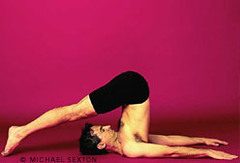
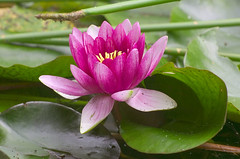

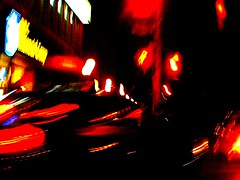
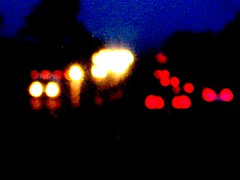
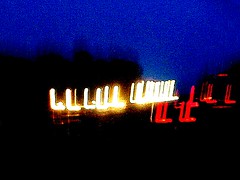
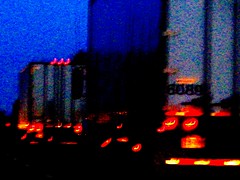
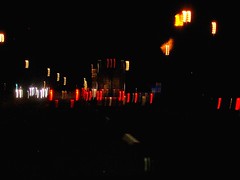

7 Comments:
I really like your blog. I read it all of the time I've just been too shy to comment.Keep up the great work. I love yoga
thanks a lot! i'll keep up with the yoga posts :)
Hi just checking out blogs and thought I would stop and read yours since we have some of the same interests and ideas. Some of the ideas are a little much and some are right on the money. I am glad I stopped by just to say hi I hope you don't mind. Some people consider it spam but if you don't want people to post why do they leave it open for the world to see. I have some great Yoga information and articles available for free around 2000 savings ideas so stop on in if you want... I also have some of the most informative sites on yoga and baby gifts and baby showers. Hope you enjoy Thank you for your time.bikram connecticut yoga
bikram connecticut yoga
stopping by to say hi is not spam, but i wouldn't say that i like leaving my blog open for the world to sell their products.
i would have found it a little more interesting to hear which ideas you found 'a little much', considering that this is the type of open dialogue i want to foster on my blog. there is nothing wrong with contraversy, but free advertising on someone else's intellectual property is spamming, whether you like it or not.
and bikram is just not my thing, dude. i think it's a little much, but that's just me.
It does not matter if somone copies useful information. this is not high school. you will not get in trouble. But I wanted to say the rubberbands really helped me with my scoliosis. It gives me a good streatch and also a good work out with out pain . It actually helps with pain by loosen the tight muscles. you can go to Ballys website or your local T.J Maxx
buying viagra online viagra lawyer ohio watermelon viagra viagra rrp australia cost cheap herbal viagra buying viagra in uk viagra rrp australia marijuana and viagra mexico viagra viagra rrp australia buy viagra in london england natural viagra substitutes does viagra really work viagra alternative
Your blog keeps getting better and better! Your older articles are not as good as newer ones you have a lot more creativity and originality now keep it up!
Post a Comment
<< Home